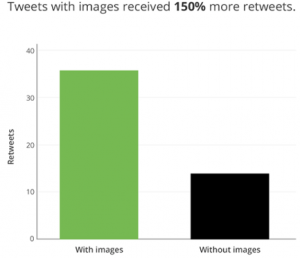Bloggers, small business owners, and marketers have been struggling with the same problem for years:how to create compelling content.Why is this such a struggle?Because they’re using the wrong process ,or worse, they don’t use a process at all. Some of them simply create content based on assumptions.
I like to compare that approach to a poker game. Players are throwing money on the table hoping to win, but the truth is, they’re completely depending on luck.
For effective content creation, find a process that works and follow it step-by-step. This way, you exponentially increase your likelihood to “win”. Below is a 4-step process that you can use to create compelling content for your audience.
Step 1: Create Buyer Personas
The first step to creating great content is: know your audience. You need to learn their language, desires, things that resonate with them, and the things they don’t like. The best way to do that is by creating buyer personas.
Buyer personas are semi-fictional characters that represent your prospective customer (or reader). By creating them, you can better understand your audience’s worldview and develop relevant products, services, and content.
Buyer personas also allow you to find the places where your prospective customers hang out. This will help you to determine which marketing channels to use to promote your content, a topic for another blog post.
Ready to create your buyer personas? Start by reading this step-by-step guide from Hubspot.
Step 2: Find Your Audience’s Pain Points
Once you’ve developed your buyer personas, the next step is to find your audience’s pain points, or problems so you can create the appropriate content.
Remember: The best content is material that your audience can read, understand, and use to solve a specific problem.
There are several ways to find your customers’ pain points. The following three resources are the most effective and least expensive:
Quora is an advanced forum where professionals constantly post questions about a variety of topics. This site is very useful to find the questions that your audience are asking pertaining to your topic.
Using your social media accounts like Facebook, Twitter, Google+ etc., you can ask your followers about their struggles. Not everyone will respond, but even a few answers will provide valuable insights and fresh ideas.
Qeryz is a web-based service that allows you to create “mini interviews” and put them on your blog. By using strategic questions for the interviews, you can learn a lot about what your readers are thinking and their struggles.
Step 3: Create a List of Proven Topic Ideas
Compelling content always starts with the right topic. If you choose a suboptimal topic, your content isn’t going to perform well.
Once you’ve gathered insights from your audience using the recommendations in Step 2, you can then proceed to create a list of topics around that information. An Idea Generator spreadsheet is a great place to brainstorm and save topic ideas. Every time you have a new idea, no matter how small or random, head over to your spreadsheet and save it.
Below is a process that you can use to validate your topic ideas:
Let’s say you run a gardening blog, and you discovered that your audience is struggling with plant care and greenhouse construction. Here’s how you can use this knowledge to create content
1) First, head over to BuzzSumo and type in your keywords. For your gardening blog, these might be “plant care” or “greenhouse.” BuzzSumo gives you the most popular content for that keyword, sorted by the number of social shares. This will show you the types of topics that are performing well in your niche.
Then, open your Idea Generator spreadsheet and save all the topic ideas you found in BuzzSumo.
2) Second, go to Topsy and repeat the process. Topsy shows you the most popular content for your specific keywords. Unlike BuzzSumo, Topsy also shows you the most popular social media posts. This gives you a deeper understanding of what your audience likes to read and share.
Again, go to your Idea Generator spreadsheet and save the insights that you found in Topsy.
Now you have a list of PROVEN content ideas, because you focused on content you know people like to read and share. If you create fresh content around these topics, it’s very likely your target audience will read and share your materials too.
I recommend scheduling a meeting with your team to start brainstorming content ideas based on the list that you created. Once you have some topics in place, it’s time to jump to the next step.
Step 4: Use the CURVE Method to Craft Compelling Content
At this point you should have a thorough understanding of your audience and a list of proven topic ideas. Now it’s time to start creating your content. Don’t worry! If you followed the prior steps this will be the easy part.
Whether you’re sharing a video, article, podcast, or image, the CURVE method will make your content stand out.
CURVE stands for:
- C = curiosity
- U = urgency
- R = relevancy
- V = value
- E = emotion
Although this method was originally created to write compelling email subject lines, it also works extremely well when it comes to content creation.
You don’t need all five CURVE elements in every piece of content, however, always try to include the last three – relevancy, value, and emotion. These are the most important elements of content that resonate with readers.
Conclusion
I hope you recognize the value of creating content using a proven process. If you follow the principles, concepts and steps that I’ve laid out, content creation will be easier and much more effective.
Remember, compelling content starts with your audience. When you understand the way your target audience views the world, you’ll be able to create content they want to read.
What other ways do you know to create awesome content?
Original post was published on the Buzzlogix Social Media Marketing Blog.
Digital & Social Articles on Business 2 Community(40)







